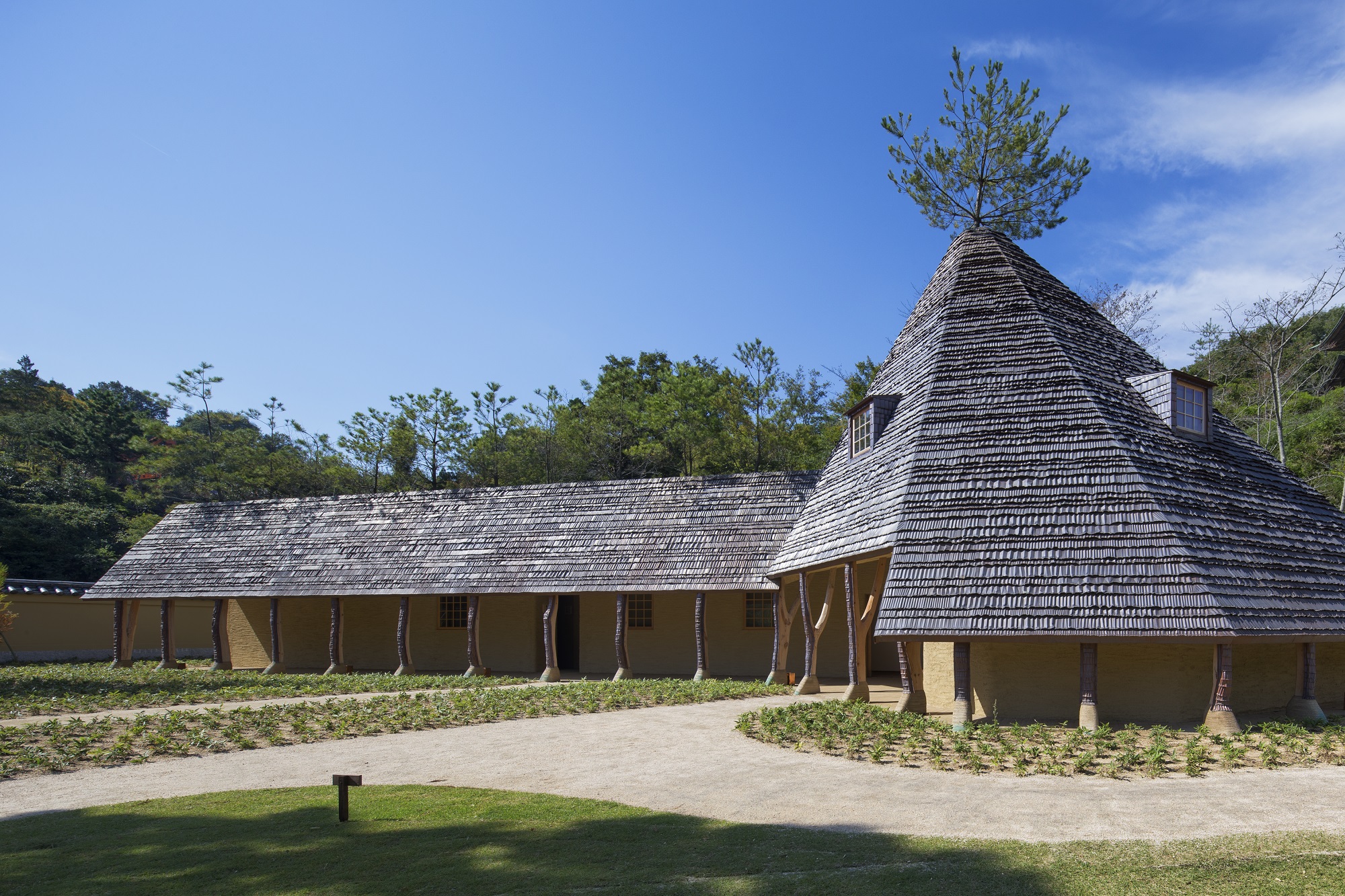
Shinshoji Temple: Shodo 神胜禅寺 松堂
by Terunobu FUJIMORI + Nobumichi OSHIMA
The first building visitors see when they walk into the Shinshoji Temple grounds is the Shodo. It serves as a temple office, visitor information center, and shop, but the Shodo is also an attraction in its own right.
The name Shodo literally means “pine hall,” and the red pine tree is a both a symbol of the Setouchi region and the guiding theme of the building. Architect and architectural historian Fujimori Terunobu, known for his unconventional use of plants and organic materials, designed the Shodo to blend in with the surrounding mountains by planting local red pine trees on the building’s roof. The roof supports these living pines and is in turn supported by rough-hewn red pine beams and pillars, made from local trees. The circularity of the design is both charming and inviting.
At first glance, the roof looks like traditional thatched bark, but it is in fact made from copper plates, hand-bent by volunteers. The Shodo’s distinctive conical roof with low eaves reaching almost to the ground recalls the nearby mountains and, combined with the rough plaster walls, creates an inviting entrance for visitors, as well as a convenient outdoor space for exhibitions and temporary stalls.
进入神胜寺,首先映入眼帘的便是“松堂”。它集寺院办公处、信息中心及商店于一身,魅力十足。
意为“松之厅堂”的松堂名副其实,处处以濑户内地区的象征性树木赤松为主题。设计师藤森照信(1946- )不仅是著名的建筑史学家,还因在建筑设计中创造性地运用植物等有机材料而闻名。他将当地赤松移植至松堂屋顶,令建筑与周围的山峦融为一体。屋顶上赤松成列生长,屋顶下作为支撑的梁与柱又由当地赤松木略加削切而成。整体轮廓匀圆,惹人喜爱。
松堂的屋顶乍看是传统的茅草屋顶,实则由志愿者手工弯折的铜板覆盖而成。屋顶局部呈圆锥形,屋檐则几乎一直延伸至地面,别具一格,不禁让人联想至周围的重峦叠嶂,与粗犷的泥灰墙相辅相成,造就出寺院入口的独特韵味。此外,松堂还为展览、商品贩卖等活动提供便利的室外空间。
DATA
Kamisanna 91, Numakuma-cho, Fukuyama,Hiroshima
℡+81-84-988-1111 (Temple Office)
Admission time: 9:00〜16:30(closed at 17:00)
Admission fee for Shinshoji Temple : JPY1,200
About 30 mins from Fukuyama Station by car













